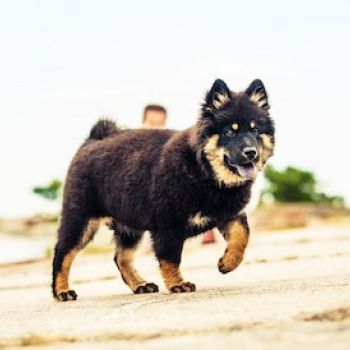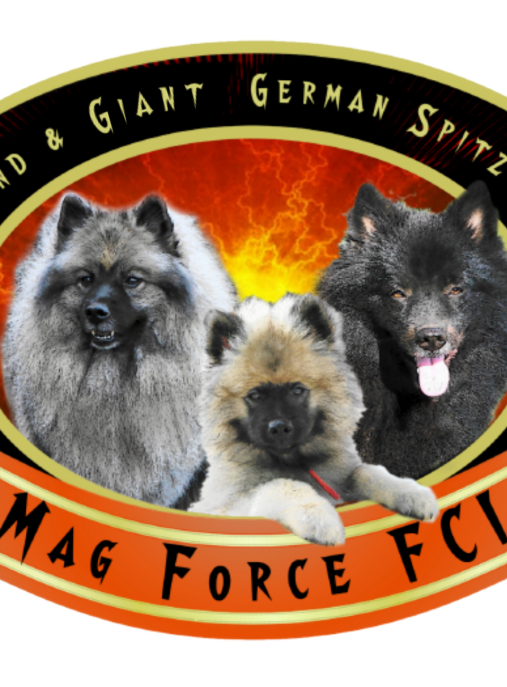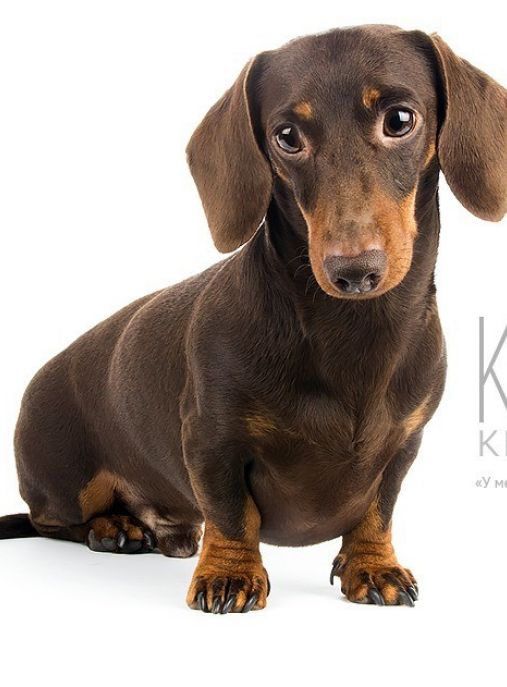The Eurasian dog breed, also known as the Eurasier, is a captivating and versatile canine that has gained popularity around the world. This breed is a harmonious blend of various dog breeds, resulting in a dog that possesses exceptional qualities in terms of temperament, appearance, and intelligence. In this comprehensive description, we will explore the history, characteristics, and interesting facts about the Eurasian breed.
The Eurasian breed originated in Germany in the 1960s, through the efforts of Julius Wipfel, a German breeder. Wipfel aimed to create a dog that combined the best traits of the Chow Chow, Wolfspitz (Keeshond), and Samoyed breeds. The result was a breed that embodied the elegance of the Chow Chow, the loyalty of the Wolfspitz, and the friendliness of the Samoyed.
According to the FCI (Fédération Cynologique Internationale) typology, the Eurasian breed belongs to Group 5, which includes Spitz and primitive types of dogs. Within this group, the Eurasian is classified under Section 5, which comprises Asian Spitz and related breeds. This classification highlights the breed's connection to its Asian ancestors, particularly the Chow Chow and the Samoyed.
The Eurasian breed is known for its versatility and adaptability. These dogs excel in various roles, making them suitable for different types of owners. They are excellent family dogs, displaying a gentle and affectionate nature towards their human companions. Eurasians are also known for their loyalty and protective instincts, making them reliable guard dogs. Additionally, their intelligence and trainability make them well-suited for various dog sports and activities, such as obedience, agility, and tracking.
In terms of physical characteristics, the Eurasian breed is of medium size, with a well-balanced and sturdy build. Males typically stand between 20 to 24 inches (51 to 61 cm) at the shoulder, while females are slightly smaller, ranging from 19 to 23 inches (48 to 58 cm). The weight of Eurasians varies between 40 to 70 pounds (18 to 32 kg), with males generally being larger and heavier than females.
One of the most distinctive features of the Eurasian breed is its beautiful coat. They have a dense double coat that comes in a variety of colors, including red, wolf-gray, black, and black and tan. The coat is medium in length, with a thick undercoat that provides insulation and protection from harsh weather conditions. Eurasians require regular grooming to maintain the health and appearance of their coat, including brushing to prevent matting and occasional bathing.
The average lifespan of a Eurasian dog is around 12 to 14 years, although with proper care and nutrition, some individuals have been known to live even longer. Like many other breeds, Eurasians may be prone to certain health issues, including hip dysplasia, patellar luxation, and certain eye conditions. Responsible breeders conduct health screenings to minimize the risk of these genetic disorders.
Despite their relatively short history, Eurasians have gained a reputation for being a healthy and robust breed. Their moderate exercise needs make them suitable for both urban and rural environments. Regular walks, playtime, and mental stimulation are essential to keep them happy and content.
In addition to their physical attributes, Eurasians possess a calm and composed temperament. They are known for being gentle, affectionate, and loyal towards their family members. Eurasians are generally good with children and other pets when properly socialized from a young age. While they may be reserved with strangers, they are not typically aggressive or overly shy.
One interesting fact about the Eurasian breed is their ability to form strong bonds with their human family. They are known to be highly attuned to their owners' emotions and can provide comfort and support when needed. This trait, combined with their protective instincts, makes them excellent therapy dogs and emotional support animals.
In conclusion, the Eurasian breed is a remarkable combination of elegance, intelligence, and loyalty. With their versatile nature and adaptability, they can thrive in various roles, from being a loving family companion to a reliable working dog. Their striking appearance, moderate size, and calm temperament make them an ideal choice for many dog lovers. Whether as a devoted family pet or a dedicated working partner, the Eurasian breed continues to captivate the hearts of dog enthusiasts worldwide.
Eurasian dogs, also known as Eurasiers, are a remarkable breed with a unique character that sets them apart from other dogs. They are intelligent, loyal, and possess a calm and gentle nature. In this text, we will delve into the character of Eurasian dogs, their behavior, and how to raise and train them effectively.
One of the most striking traits of Eurasian dogs is their loyalty. They form strong bonds with their families and are deeply devoted to their owners. This loyalty extends to their protective nature, making them excellent watchdogs. Eurasians are known to be alert and attentive, always keeping a watchful eye on their surroundings. However, they are not aggressive by nature and will only act if they sense a genuine threat.
Eurasian dogs are also highly intelligent. They possess a keen mind and are quick learners. This intelligence, combined with their strong desire to please their owners, makes them highly trainable. They excel in obedience training and can easily learn complex commands and tricks. However, it is important to note that Eurasians can be sensitive to harsh training methods. Positive reinforcement, consistency, and patience are key when training these dogs.
In terms of behavior, Eurasian dogs are generally calm and composed. They have a balanced temperament and are not prone to excessive barking or destructive behavior. They are known to be reserved with strangers but warm up quickly once they sense a friendly presence. Socialization from an early age is crucial to ensure they grow up to be well-rounded and confident dogs.
Eurasians thrive on human companionship and do not do well when left alone for long periods. They are a breed that craves attention and affection from their families. Regular exercise and mental stimulation are essential to keep them happy and prevent boredom. Daily walks, playtime, and interactive toys can help meet their physical and mental needs.
When it comes to raising Eurasian dogs, early socialization and proper training are vital. Expose them to various environments, people, and other animals from a young age to help them develop into well-adjusted adults. Positive reinforcement training methods, such as rewards and praise, work best with this breed. Consistency and patience are key, as Eurasians can be sensitive to harsh discipline.
Eurasian dogs are generally healthy and have a long lifespan. However, like any breed, they may be prone to certain health issues such as hip dysplasia, allergies, and thyroid problems. Regular veterinary check-ups, a balanced diet, and regular exercise can help maintain their overall health and well-being.
In conclusion, Eurasian dogs are a wonderful breed with a unique character. Their loyalty, intelligence, and calm nature make them excellent companions and family pets. With proper training, socialization, and care, Eurasians can thrive and bring joy to their owners' lives for many years to come.
The Eurasian dog breed is a beautiful and intelligent breed that requires proper care and attention to thrive. Here are some tips on how to care for Eurasian dogs, including what to do and what not to do:
1. Exercise: Eurasian dogs are active and energetic, so regular exercise is crucial. Aim for at least 30-60 minutes of exercise daily, including walks, runs, or playtime in a secure, fenced area. Mental stimulation through interactive toys or training sessions is also important.
2. Grooming: Eurasian dogs have a thick double coat that requires regular grooming. Brush their fur at least once a week to prevent matting and remove loose hair. During shedding seasons, daily brushing may be necessary. Bathe them only when necessary to avoid stripping their natural oils.
3. Nutrition: Provide a balanced and nutritious diet to keep your Eurasian dog healthy. Consult with a veterinarian to determine the appropriate portion size and choose high-quality dog food that meets their specific needs. Avoid overfeeding to prevent obesity, which can lead to various health issues.
4. Socialization: Eurasian dogs are known for their loyalty and strong bond with their family. However, early socialization is crucial to ensure they are well-adjusted and friendly towards strangers, children, and other animals. Expose them to different environments, people, and animals from a young age.
5. Training: Eurasian dogs are highly intelligent and eager to please, making them relatively easy to train. Use positive reinforcement techniques such as treats, praise, and rewards to reinforce good behavior. Consistency, patience, and firmness are key to successful training.
6. Health care: Regular veterinary check-ups are essential to monitor your Eurasian dog's overall health. Vaccinations, parasite prevention, and dental care should be part of their routine. Additionally, be aware of breed-specific health issues such as hip dysplasia and eye problems, and discuss preventive measures with your vet.
7. Mental stimulation: Eurasian dogs are intelligent and require mental stimulation to prevent boredom and destructive behavior. Provide puzzle toys, interactive games, and training sessions to keep their minds engaged. Consider activities like agility training or obedience competitions to challenge them further.
What not to do:
1. Neglect exercise: Lack of physical activity can lead to behavioral problems and obesity. Avoid confining your Eurasian dog for extended periods without exercise.
2. Use harsh training methods: Eurasian dogs respond best to positive reinforcement training techniques. Avoid using punishment or physical force, as it can damage their trust and lead to fear-based behaviors.
3. Leave them alone for long periods: Eurasian dogs thrive on companionship and can suffer from separation anxiety if left alone for extended periods. Ensure they have enough mental and physical stimulation, and consider doggy daycare or a pet sitter if you're away for long hours.
4. Ignore grooming: Neglecting grooming can lead to matting, skin issues, and discomfort for your Eurasian dog. Regular brushing and occasional professional grooming are necessary to maintain their coat's health and appearance.
5. Overlook socialization: Early socialization is crucial for Eurasian dogs. Failing to expose them to different people, animals, and environments can lead to fearfulness or aggression towards unfamiliar situations.
Remember, each Eurasian dog is unique, and their care may vary slightly. Pay attention to their individual needs, and always consult with a veterinarian or professional dog trainer for personalized advice. With proper care, love, and attention, your Eurasian dog will be a happy and healthy companion for many years to come.
The common color of Eurasian dogs is a fascinating blend of various shades and hues that truly captivate the eye. These dogs exhibit a wide range of colors, each possessing its own unique charm and allure. From the rich and earthy tones to the vibrant and striking shades, the color palette of Eurasian dogs is a true testament to the diversity found within this breed.
One of the most prevalent colors seen in Eurasian dogs is a beautiful and lustrous golden coat. This shade exudes warmth and radiance, reminiscent of the sun's golden rays. The golden color can vary in intensity, ranging from a light, almost creamy hue to a deep, rich gold that shimmers in the sunlight. This color is often accompanied by a luxurious and silky texture, further enhancing the dog's overall appearance.
Another common color found in Eurasian dogs is a stunning and regal shade of black. This color exudes elegance and sophistication, giving the dogs an air of mystery and allure. The black coat is often glossy and sleek, reflecting light and adding depth to the dog's appearance. It creates a striking contrast against the dog's eyes, which can range from a piercing amber to a deep and soulful brown.
In addition to golden and black, Eurasian dogs can also be seen in a captivating array of shades of gray. These dogs possess a coat that ranges from a soft and delicate silver to a deep and intense charcoal. The gray color adds a touch of sophistication and refinement to the dog's overall appearance, giving them an air of wisdom and grace. The coat's texture can vary as well, with some dogs having a plush and fluffy coat, while others have a sleek and smooth one.
One cannot overlook the enchanting shades of brown that are commonly found in Eurasian dogs. Ranging from a warm and inviting chestnut to a deep and rich mahogany, the brown color adds a sense of earthiness and warmth to the dog's appearance. The coat's texture can vary from a dense and thick fur to a sleek and shiny one, further enhancing the dog's overall charm.
It is important to note that while these colors are commonly seen in Eurasian dogs, variations and combinations are also prevalent. Some dogs may exhibit a mix of colors, such as a golden coat with black markings or a gray coat with hints of brown. These unique combinations only add to the allure and individuality of each dog, making them truly one-of-a-kind.
In conclusion, the common color of Eurasian dogs is a mesmerizing blend of golden, black, gray, and brown. Each shade brings its own unique charm and beauty, creating a diverse and captivating color palette within this breed. Whether it is the warm and radiant golden coat, the elegant and mysterious black, the sophisticated shades of gray, or the earthy and inviting browns, Eurasian dogs are a true feast for the eyes.
Eurasian dogs, also known as Eurasier dogs, are a beautiful and intelligent breed that originated in Germany. These dogs are known for their loyal and affectionate nature, making them wonderful companions for families and individuals alike. When it comes to their health, Eurasian dogs are generally considered to be a robust and healthy breed. However, like all dogs, they are still susceptible to certain diseases and require proper care to maintain their overall well-being.
One of the most common health issues seen in Eurasian dogs is hip dysplasia. This is a genetic condition where the hip joint doesn't develop properly, leading to pain, lameness, and arthritis. Regular exercise, a balanced diet, and maintaining a healthy weight can help reduce the risk of hip dysplasia. Additionally, responsible breeders perform hip evaluations on their breeding dogs to minimize the occurrence of this condition in future generations.
Another common health concern in Eurasian dogs is allergies. These can manifest as skin irritations, itching, and gastrointestinal issues. Allergies can be caused by various factors, including food, environmental allergens, or even certain medications. Identifying and avoiding the allergen is crucial in managing allergies. In some cases, a veterinarian may recommend a hypoallergenic diet or prescribe medications to alleviate symptoms.
Eurasian dogs are also prone to certain eye conditions, such as progressive retinal atrophy (PRA) and cataracts. PRA is a degenerative disease that leads to vision loss and eventual blindness. Regular eye examinations by a veterinary ophthalmologist can help detect these conditions early on, allowing for appropriate management or treatment options.
Dental health is another aspect of Eurasian dog care that should not be overlooked. Poor dental hygiene can lead to gum disease, tooth loss, and even systemic infections. Regular brushing of their teeth, providing dental chews or toys, and scheduling professional dental cleanings are essential for maintaining good oral health.
To ensure the overall health of Eurasian dogs, regular veterinary check-ups are crucial. These visits allow for early detection of any underlying health issues and provide an opportunity to update vaccinations and administer preventive medications for parasites such as fleas, ticks, and heartworms.
Exercise is vital for Eurasian dogs to maintain their physical and mental well-being. They require daily walks, playtime, and mental stimulation to prevent boredom and destructive behaviors. However, it's important to avoid excessive exercise, especially during hot weather, as Eurasian dogs can be prone to heatstroke due to their thick double coat.
Proper nutrition is essential for the health of Eurasian dogs. A high-quality, balanced diet that meets their nutritional needs is recommended. Consultation with a veterinarian can help determine the appropriate diet based on the dog's age, activity level, and any specific dietary requirements.
Grooming is an important aspect of Eurasian dog care. Their thick double coat requires regular brushing to prevent matting and to remove loose hair. They typically shed heavily twice a year, during which more frequent brushing is necessary. Bathing should be done as needed, using a gentle dog shampoo to maintain the coat's natural oils.
In conclusion, Eurasian dogs are generally healthy and robust, but they are still prone to certain genetic and environmental health issues. Regular veterinary care, proper nutrition, exercise, dental hygiene, and grooming are essential for maintaining their overall health and well-being. With proper care and attention, Eurasian dogs can live long, happy, and healthy lives as beloved members of their families.
The Eurasian dog breed, also known as the Eurasier, is a medium-sized, well-balanced, and intelligent dog originating from Germany. When it comes to their nutrition, it is essential to provide them with a well-balanced diet that meets their specific needs. A healthy diet is crucial for their overall well-being, energy levels, and longevity.
To ensure optimal nutrition for Eurasian dogs, it is important to consider their dietary requirements. A high-quality dog food that is specifically formulated for medium-sized breeds is a good starting point. Look for a brand that uses real meat as the primary ingredient and avoids artificial additives, fillers, and by-products.
Protein is a vital component of a Eurasian dog's diet. It helps in muscle development, repair, and overall growth. Look for dog food that contains high-quality sources of protein such as chicken, turkey, or fish. It is important to note that the protein content should be appropriate for the dog's age, size, and activity level.
Fats are another essential nutrient for Eurasian dogs. They provide a concentrated source of energy and aid in the absorption of fat-soluble vitamins. Look for dog food that contains healthy fats like omega-3 and omega-6 fatty acids, which promote a healthy coat and skin. Sources of healthy fats include fish oil, flaxseed, and chicken fat.
Carbohydrates are a source of energy for dogs, but it is important to choose complex carbohydrates that provide sustained energy rather than simple sugars. Whole grains like brown rice, oats, and barley are good options. Avoid dog foods that contain excessive amounts of corn, wheat, or soy, as these ingredients may cause allergies or digestive issues in some dogs.
Fruits and vegetables are excellent additions to a Eurasian dog's diet. They provide essential vitamins, minerals, and antioxidants. Some safe options include carrots, sweet potatoes, blueberries, and spinach. However, it is important to avoid feeding dogs certain fruits like grapes, raisins, or avocados, as they can be toxic.
Feeding guidelines for Eurasian dogs can vary depending on factors such as age, weight, and activity level. It is recommended to follow the feeding instructions provided by the dog food manufacturer and adjust the portions accordingly. Regular monitoring of the dog's weight and body condition is crucial to ensure they are receiving the right amount of food.
In addition to a balanced diet, fresh water should always be available for Eurasian dogs. Hydration is essential for their overall health and helps maintain proper organ function.
While it is important to focus on what to feed Eurasian dogs, it is equally important to be aware of what to avoid. Foods that are toxic to dogs include chocolate, caffeine, onions, garlic, and certain artificial sweeteners like xylitol. These can cause severe health issues or even be fatal to dogs.
Furthermore, it is important to avoid overfeeding Eurasian dogs, as they can be prone to weight gain. Obesity can lead to various health problems, including joint issues and heart disease. Regular exercise and portion control are key to maintaining a healthy weight.
In conclusion, providing a well-balanced diet is crucial for the nutrition and overall health of Eurasian dogs. High-quality dog food with appropriate protein, fat, and carbohydrate content, along with fruits and vegetables, will help ensure their nutritional needs are met. Avoiding toxic foods and monitoring portion sizes will contribute to their well-being and longevity.







